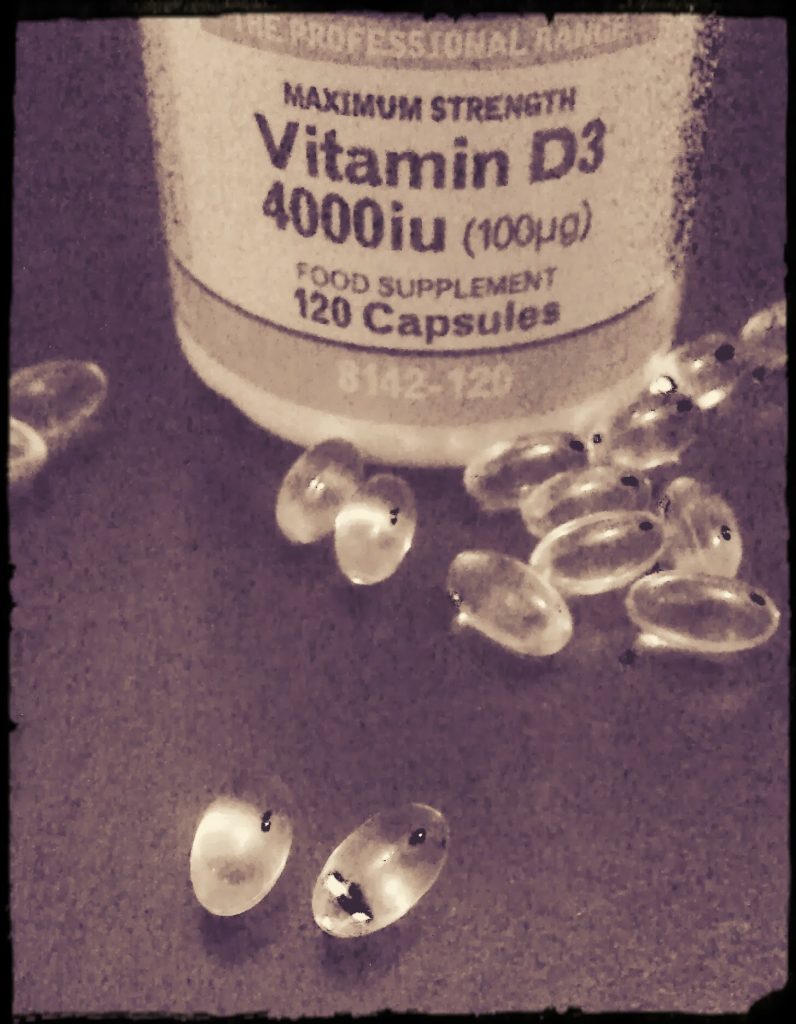 Vitamin D is synthesised in the skin by the action of ultraviolet light on cholesterol. This process allows large amounts of the vitamin to be synthesised in just a few minutes of strong sunlight exposure. However, for many reasons certain individuals do not have access to the sun, the most common reason being geographical location. Therefore, dietary vitamin D is an important consideration for those who do not have access to year round sunlight. Sources of vitamin D in food are limited, and so supplements may be necessary during the winter months, with ranges of intakes from 2000 to 4000 iu being recommended. However, it is difficult to predict the amount required on a case by case basis because so many variables can influence the requirement for vitamin D intake from the diet. One variable that is being actively researched is the biochemical individuality surrounding the ability to absorb vitamin D from the gut. In this regard the absorption of vitamin D has been shown to be highly variable in humans.
Vitamin D is synthesised in the skin by the action of ultraviolet light on cholesterol. This process allows large amounts of the vitamin to be synthesised in just a few minutes of strong sunlight exposure. However, for many reasons certain individuals do not have access to the sun, the most common reason being geographical location. Therefore, dietary vitamin D is an important consideration for those who do not have access to year round sunlight. Sources of vitamin D in food are limited, and so supplements may be necessary during the winter months, with ranges of intakes from 2000 to 4000 iu being recommended. However, it is difficult to predict the amount required on a case by case basis because so many variables can influence the requirement for vitamin D intake from the diet. One variable that is being actively researched is the biochemical individuality surrounding the ability to absorb vitamin D from the gut. In this regard the absorption of vitamin D has been shown to be highly variable in humans.

Vitamin D absorption can be highly variable between individuals. Some of this variability may relate to the presence of polymorphisms in particular genes (polymorphisms are different forms of the same gene). The polymorphisms that affect vitamin D absorption also affect cholesterol absorption, because the genes are related to the chylomicrons that are required for the absorption of both vitamin D and cholesterol. Biochemical individuality therefore plays an important role in vitamin D absorption.
For example, one group of researchers investigated the genetic factors influencing vitamin D absorption. To do this they focussed on the cholecalciferol (vitamin D3) form of the vitamin, the form produced by animals. They genotyped a group of healthy men to assess which genes they possessed, and they following an overnight fast measured their fasting 25-hydroxyvitamin D levels. They then supplemented then with 5 mg (200,000 iu) of vitamin D and measured the vitamin D that appeared in their chylomicrons in their blood over 8 hours. Chylomicron concentrations peaked 5.4 hours after supplementation, but their was an extremely variable response to the vitamin D. The researchers showed that the variance in the response to the vitamin D was associated with polymorphisms in 13 chylomicron related genes, which can also influence cholesterol response. Therefore the variability in vitamin D absorption from the diet in humans may be influenced by the same genes that determine the response to dietary cholesterol.
Eat Well, Stay Healthy and Protect Yourself
RdB
